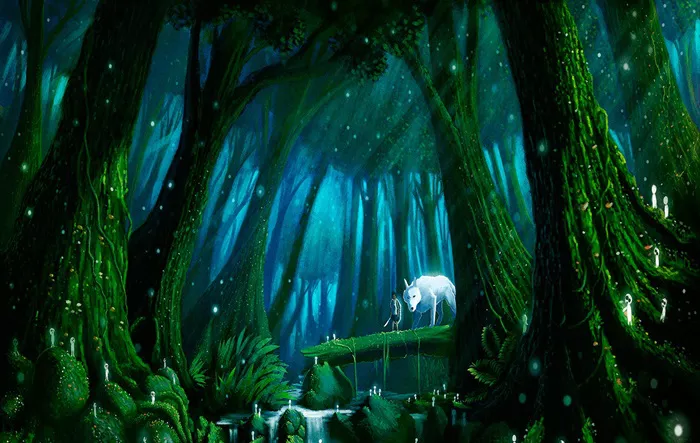Princess Mononoke, directed by Hayao Miyazaki and produced by Studio Ghibli, is a landmark film in the realm of animation, known for its complex storytelling, profound themes, and striking visuals. Since its release in 1997, the film has captivated audiences worldwide and has been a subject of extensive academic and cultural discussion. The ending of Princess Mononoke is particularly significant as it encapsulates the film’s central themes of environmentalism, conflict, and reconciliation. This article explores the conclusion of Princess Mononoke, examining its thematic depth, narrative resolution, and broader cultural and environmental implications.
Princess Mononoke
Before delving into the ending, it is essential to understand the film’s context. Princess Mononoke is set in the late Muromachi period of Japan and follows the journey of Ashitaka, a prince of the Emishi tribe, who is cursed by a demonized boar god. Seeking a cure, Ashitaka travels to the west, where he encounters Iron Town, led by Lady Eboshi, and the Wolf Clan, protected by San, also known as Princess Mononoke. The film weaves a complex tale of industrial progress, the fierceness of nature, and the spirits that dwell within it.
Conflict and Characters
The film’s primary conflict revolves around the struggle between the industrial ambitions of humans, led by Lady Eboshi, and the gods of the forest, represented by San and the wolf gods. Lady Eboshi’s goal to clear the forests for Iron Town’s expansion and her efforts to kill the Forest Spirit highlight humanity’s often destructive impact on nature. In contrast, San, who has been raised by wolves, fights fiercely to protect the forest and its inhabitants.
Climactic Confrontations
The climax of Princess Mononoke is a series of intense confrontations that escalate the existing conflicts to their highest stakes. Ashitaka, finding himself in the middle of this war, seeks a way to broker peace. The peak of these confrontations occurs when Lady Eboshi succeeds in decapitating the Forest Spirit, turning it into a destructive entity that threatens to consume everything in its path.
The Ending Explained
The Transformation of the Forest Spirit: As the Forest Spirit dies, it begins a nightmarish transformation during its death throes, raining down a deadly, purifying substance that both kills and heals. The landscape is radically altered, signifying the profound impact of human actions on nature.
Ashitaka and San’s Intervention: Ashitaka and San play crucial roles in retrieving the Forest Spirit’s severed head, which is essential for restoring balance. Their efforts symbolize the possibility of reconciliation between humans and nature, emphasizing mutual respect and understanding.
The Restoration: Upon the return of its head, the Forest Spirit’s death results in a massive explosion of life force that regenerates the forest and heals the land, including lifting Ashitaka’s curse. This moment is pivotal, illustrating the theme of life, death, and renewal, and highlighting nature’s resilience and capacity for regeneration, even after significant damage.
Resolution of Human and Nature Conflict: In the aftermath, although Iron Town is destroyed, the survivors, including Lady Eboshi, vow to rebuild it with more consideration for the surrounding environment. Eboshi’s change of heart, prompted by the catastrophic events and Ashitaka’s influence, suggests a future where human industry might coexist more harmoniously with nature.
Ashitaka and San’s Future: The film concludes with Ashitaka and San acknowledging their love for each other but also their different paths—Ashitaka will help rebuild Iron Town, while San will continue to live in the forest. This resolution underlines a theme of coexistence despite differences, reflecting Miyazaki’s nuanced view of human-nature relationships.
Thematic Reflections and Implications
Princess Mononoke ends on a hopeful note, yet it does not present a simple resolution. The conclusion suggests that the relationship between humanity and nature is fraught with challenges but can be navigated through respect, understanding, and compromise.
Cultural and Environmental Relevance
The ending of Princess Mononoke is profoundly relevant in today’s context, as it mirrors real-world issues of environmental degradation and the search for sustainable practices. Miyazaki’s film remains a touchstone for discussions about the environment, industrialization, and their impact on traditional cultures and natural habitats.
Conclusion
The conclusion of Princess Mononoke is a masterful blend of hope and realism, encouraging viewers to reflect on their relationship with the environment and each other. By not offering a simple resolution, Miyazaki respects the complexity of the issues at hand, making Princess Mononoke a timeless piece that continues to inspire and provoke thoughtful discussion among audiences worldwide. Through its ending, the film challenges us to think deeply about our actions and their impact on the world around us, urging a path of mindful coexistence and respect for all life forms.

